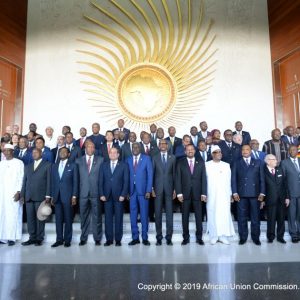At the height of the Cold War in the 1960s, much of anti-communist Southeast Asia aligned itself with the United States, entrenching U.S. hegemony around North Vietnam and its close allies in communist China. These countries regarded ties with the U.S. as a way to maintain and develop their economic and political strength in a Western capitalist-dominated world while at the same time securing domestic power against national communist parties within their nations. With the normalization of Sino-U.S. relations in 1972 and the imminent loss of the Americans in Vietnam, however, Southeast Asian countries rushed to accommodate the growing Chinese power.
Fast forward 50 years, and the 2010s have seen a surge in Chinese involvement in Southeast Asia. None perhaps is more symbolic of this relationship than the Belt and Road Initiative (BRI), Chinese President Xi Jinping’s infrastructure gift to the world. At the time of the initiative’s launch in 2013, Southeast Asia was in China’s backyard and in dire need of infrastructure development. The wave of Chinese money into the region was hard to miss, and ten years on, Southeast Asia is dotted with the BRI’s signature projects. From the China-Laos Railway to the East Coast Rail Link in Malaysia, they are a sign that engagement is not only alive in Southeast Asia but deepening, too.
At the same time, the U.S. is losing ground in Southeast Asia. Despite Beijing’s rather aggressive military and diplomatic approach in recent years, Chinese influence has soared in a crucial competition arena with Washington. The shift can be attributed to improving economic, diplomatic, and military ties between China and Southeast Asia, coupled with former U.S. President Trump’s isolationist pullback and now-President Biden’s calls for democracy in a region full of authoritarian regimes. China, on the other hand, has offered support with few political strings attached.
China’s strategy has given Southeast Asian countries an incentive to grow closer and negotiate favorable deals. In a recent poll, a majority of Southeast Asian people would side with China over the U.S. if forced to choose. Yet many expressed concern over economic or military coercion from China, a concern many in the West share. Former U.S. President Mike Pence described China’s infrastructure projects as “debt-trap diplomacy” where Chinese banks load poorer countries with debt and take control of the project when payments are not met.
The Trump administration raised the example of the Sri Lankan port of Hambantota, a BRI project whose ownership was transferred to a Chinese firm after the Sri Lankan government defaulted on its loans. While the case is an example of corrupt local politicians taking shortsighted, unsustainable deals from China, it is more the exception than the rule. BRI projects, especially in Southeast Asia, have largely succeeded. Others that have fallen short have had their terms renegotiated or projects shelved completely.
Painting a broad brush over the BRI as a predatory loan scheme oversimplifies China’s ambitions. China may be growing its influence in Southeast Asia through these projects, but it is not the “debt-trap diplomacy” maintained by critics of China. In fact, failed BRI projects also tarnish the global reputation that China prizes. Its outreach into global infrastructure is a learning process with frequent adjustments to deal with political risks Chinese lenders have little experience with.
Similarly, framing Southeast Asia as a political playground for the U.S. and China discounts the subtlety, agency, and leverage these smaller countries hold in their own destinies. The fate of the region does not come down to siding with the U.S. or China but rather to the initiatives and objectives of Southeast Asians themselves. In the past decade, the countries have grown more cautious and confident in their dealings with China, picking only those projects with a high potential of benefitting their economies. They are also encouraging more diverse investments away from infrastructure. Thailand, for example, wants to approach cooperation with China from a more environmental angle with investments in renewable technologies.
On the other end, gaining influence in Southeast Asia takes work on China’s part. Today, its increasing willingness to flex its military muscle in the South China Sea against the likes of the Philippines and Vietnam shows that the path into Southeast Asia is not straightforward. At the cost of potentially devastating economic sanctions and retaliation from China, the region is committed to maintaining its economic and political sovereignty. Southeast Asia remains largely resistant to China’s charm and resilient against the veiled threats posed by Beijing.
It is not easy for the countries of Southeast Asia to publicly criticize or deny China, just as they are reluctant to shift away from the U.S. entirely. Engagement and investment from both Beijing and Washington have been and remain crucial for the region’s development despite the vast differences between countries. The heightening tension between the U.S. and China is an area of concern for Southeast Asia’s leaders, who are worried not just about the risk of conflict, but about its impact on their economies that rely so heavily on the healthy, strategic competition between the two powers.
Ultimately, Southeast Asia’s pivot toward China is not an indication that the region is forsaking the U.S. It is a complex region with diverse countries, each with its own goals and ambitions, and all with the desire to continue engaging with Washington and Beijing. Whether the region can remain proactive in shaping the Sino-U.S. rivalry in the region depends on the visions of its regional leaders, their coherence as part of ASEAN, and, most importantly, the adaptability of the individual states.
Feature Image: Khem Sovannara/AFP/Getty Images






Comments are closed.